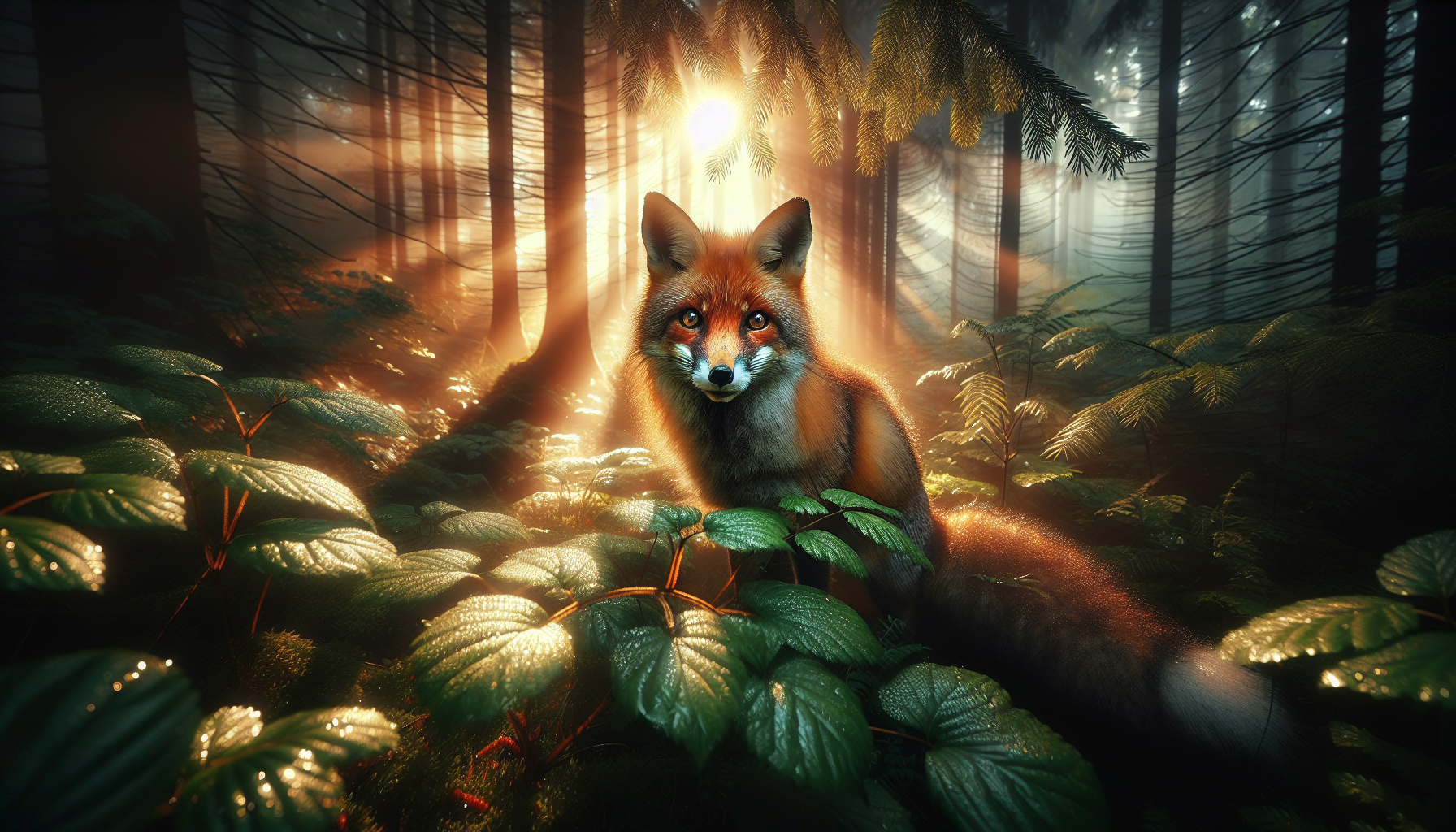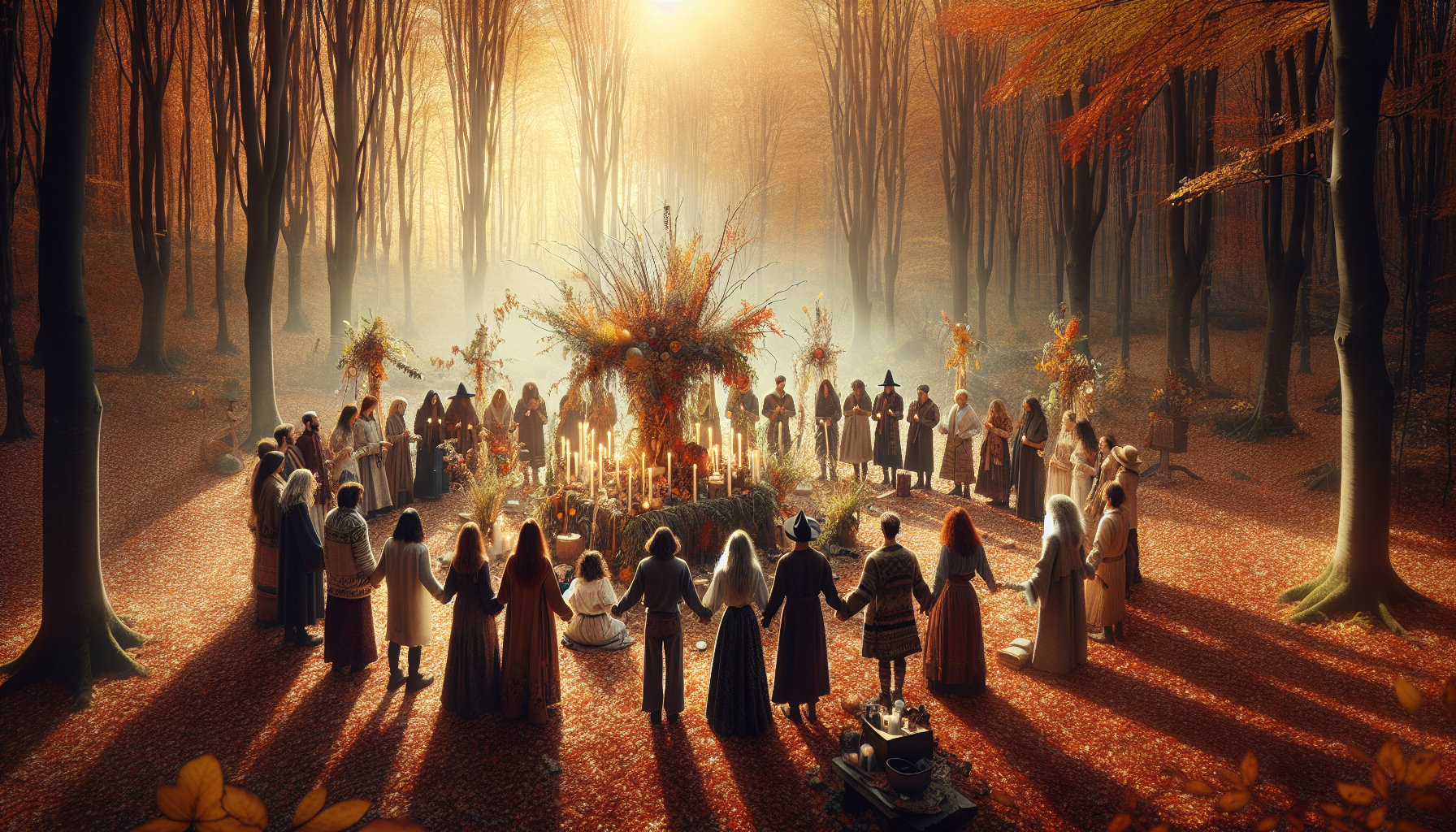In the vast tapestry of nature, few creatures captivate our imaginations quite like the enigmatic fox. These cunning spirit tricksters have prowled through the pages of folklore and mythology across cultures, embodying both wisdom and mischief in their lithe, russet forms. But beyond the stories and symbols lies a fascinating reality—a world where the cunning and adaptability of foxes allow them to thrive in diverse environments, from the snowy expanses of the Arctic tundra to the bustling urban landscapes. This article invites you to step into this world, where each twist and turn in the fox’s journey reveals a creature of complexity and intrigue, waiting to be understood.
To truly appreciate the allure of foxes, one must first explore the myriad ways in which they have woven themselves into the cultural fabric of societies around the globe. Whether as the revered kitsune of Japanese legend, with its transformative powers and supernatural wisdom, or the sly Reynard of European tales, foxes have always been more than mere animals. They are symbols, bridging the natural and the mystical, embodying a duality that challenges and enchants us. Yet, as we delve deeper, it becomes clear that the true wonder of foxes lies not just in their symbolic roles but in their real-world behaviors and adaptations. From their impressive hunting strategies to their social structures, foxes are a testament to the marvels of evolution and the endless possibilities of nature’s design.
In this exploration, we will uncover the secrets of fox communication, their role in various ecosystems, and the challenges they face in an ever-changing world. We’ll journey through scientific studies that unravel the complexities of their social interactions, delve into conservation efforts aimed at protecting these remarkable creatures, and ponder the delicate balance between human expansion and wildlife preservation. By the end of this journey, you will not only have a deeper understanding of foxes but also a renewed appreciation for the delicate interplay between humanity and the natural world. So, prepare to be enthralled by the tale of the fox, a creature that continues to dance on the edges of our consciousness, forever elusive and endlessly fascinating. 🦊✨
Understanding the Fox: A Master of Adaptation
Foxes are fascinating creatures that captivate the imagination with their cunning and elusive nature. They belong to the Canidae family, which includes other well-known animals like wolves and domestic dogs. Among the various species of foxes, the red fox (Vulpes vulpes) is the most widespread, found across the Northern Hemisphere. However, there are many other types, each with unique characteristics that adapt them to their specific environments.
One of the most remarkable aspects of foxes is their ability to adapt to diverse habitats, ranging from urban areas to remote wildernesses. This adaptability is a key factor in their survival and proliferation. Foxes are known for their omnivorous diet, consuming anything from small mammals and birds to fruits and insects, which allows them to thrive in different ecosystems. Their opportunistic feeding habits are supported by their acute senses of hearing, smell, and sight, enabling them to hunt effectively at night.
Foxes also possess physical adaptations that aid their survival. Their slender bodies and bushy tails are not only iconic but also functional. The tail, or “brush,” serves multiple purposes, such as balancing while running and providing warmth when wrapped around the body during sleep. The fur of foxes changes with the seasons, becoming thicker and more insulating in the winter, and shedding in the warmer months to help regulate body temperature.
The Social Structure of Foxes: Solitary Yet Sociable
Despite being generally solitary animals, foxes exhibit complex social behaviors. They often live alone, especially when hunting, but they are also capable of forming small family groups, especially during the breeding season. A typical fox family, known as a “leash” or “skulk,” may consist of a mated pair and their offspring, who remain with their parents until they are mature enough to establish their own territories.
The social dynamics of foxes are intriguing. While they are known to defend their territories fiercely, foxes also engage in playful interactions with their family members. These interactions are not only essential for social bonding but also for teaching the young essential survival skills. Communication among foxes is complex and involves vocalizations, body language, and scent marking. Their vocal repertoire includes a range of sounds, from the well-known fox scream to softer barks and whines.
Table: Comparative Social Structures of Fox Species
| Species | Social Structure | Key Characteristics |
|---|---|---|
| Red Fox | Solitary/Family Groups | Adaptable to urban environments, omnivorous |
| Arctic Fox | Family Groups/Cooperative Breeding | Thick fur, adapted to cold climates |
| Fennec Fox | Family Groups | Large ears for thermoregulation, desert habitat |
Folklore and Mythology: The Fox’s Trickster Persona
Throughout history, foxes have been depicted as cunning and mischievous creatures in various cultures’ folklore and mythology. Their reputation as tricksters can be traced back to ancient civilizations, where they were often seen as symbols of intelligence and deceit. In many Native American tribes, the fox is considered a cunning spirit and a shapeshifter, capable of outwitting both humans and other animals.
In East Asian cultures, particularly in Japan and China, foxes are revered as mystical beings. The Japanese kitsune are fox spirits that possess the ability to transform into human form. These foxes are often depicted as wise and magical, serving as messengers for the gods or as guardians of certain shrines. Conversely, some stories portray them as malevolent tricksters, using their abilities to play pranks on humans.
Similarly, in European folklore, the fox is a symbol of slyness and guile. Aesop’s fables, dating back to ancient Greece, often feature the fox as a clever and cunning character, using wit to overcome challenges. The association of foxes with intelligence and deceit continues to influence modern literature and media, making them enduring figures in storytelling.
For more insights into the mythical aspects of foxes, watch this engaging video: “The Mystical Kitsune: Fox Spirits of Japan” – Mythical Japan Channel.
The Conservation Status of Foxes: Challenges and Efforts
While foxes are generally adaptable and widespread, some species face significant conservation challenges. Habitat loss, hunting, and climate change are among the primary threats impacting their populations. For instance, the island fox (Urocyon littoralis), native to the Channel Islands of California, was once critically endangered due to predation by non-native species and disease.
Conservation efforts have been crucial in stabilizing and recovering fox populations. Initiatives include habitat restoration, legal protection, and the introduction of breeding programs to ensure the survival of threatened species. The success story of the island fox, which has rebounded significantly due to such efforts, highlights the importance of targeted conservation actions.
Moreover, understanding the ecological roles of foxes is vital for their conservation. As mesopredators, foxes play a crucial role in controlling the populations of small mammals and insects, thus maintaining ecological balance. Their presence in ecosystems supports biodiversity and helps sustain healthy environments.
Table: Conservation Status of Selected Fox Species
| Species | Conservation Status | Threats | Conservation Efforts |
|---|---|---|---|
| Red Fox | Least Concern | Habitat loss, hunting | Protected in some regions, population control in others |
| Arctic Fox | Least Concern | Climate change, competition with red foxes | Habitat protection, climate action |
| Island Fox | Near Threatened | Non-native species, disease | Breeding programs, habitat restoration |
To further explore the conservation efforts and challenges facing foxes, check out the informative video below: “Conserving the Clever: Fox Conservation Efforts Worldwide” – Wildlife Conservation Channel.
Conclusion
In conclusion, the enigmatic world of foxes unveils a tapestry rich with intrigue, intelligence, and adaptability, traits that have fascinated humans for centuries. These cunning spirit tricksters occupy a unique niche in the animal kingdom, bridging the gap between the wild and the domesticated. As we have explored throughout this article, foxes are not merely creatures of folklore and myth, but are real, living beings with complex social structures and behaviors that reflect their clever nature.
To recap, we delved into the diverse species of foxes, highlighting the red fox’s adaptability to urban environments, the arctic fox’s resilience in extreme cold, and the fennec fox’s survival in arid deserts. Each species showcases a remarkable ability to thrive in different ecosystems, a testament to their evolutionary success. The intelligence of foxes is evident in their hunting strategies and problem-solving skills, which we discussed with examples of how they adapt to various environmental challenges.
Moreover, foxes hold a significant place in cultural narratives worldwide. From Aesop’s Fables to Native American legends, the fox often symbolizes cunning and wisdom, traits that have earned it both admiration and suspicion. These stories not only entertain but also offer insights into human perceptions of intelligence and morality.
We also examined the conservation status of various fox species, emphasizing the importance of habitat preservation and sustainable practices to ensure their survival. Human activities, such as urbanization and climate change, pose significant threats to their habitats, necessitating a collective effort to mitigate these impacts.
The importance of understanding and preserving foxes cannot be overstated. As indicators of environmental health, they play a crucial role in maintaining ecological balance. By protecting fox habitats, we also safeguard countless other species that share their ecosystems. This effort requires collaboration between scientists, policymakers, and the public to promote conservation initiatives and support research that enhances our understanding of these remarkable creatures.
As we conclude our exploration, let us be inspired by the resilience and adaptability of foxes. Their story is a reminder of the delicate balance of nature and our responsibility to protect it. By fostering a deeper appreciation for foxes and their habitats, we can contribute to a more sustainable future where humans and wildlife coexist harmoniously.
We encourage you to share this article with others to raise awareness about the fascinating world of foxes and the importance of their conservation. Engage in discussions, whether online or in person, to spread knowledge and inspire action. Perhaps you might even apply what you’ve learned by supporting local wildlife conservation efforts or simply observing foxes in their natural habitat with a renewed sense of wonder and respect.
Thank you for joining us on this journey through the world of foxes. Let their cunning spirit inspire you to look beyond the surface and appreciate the intricate web of life that surrounds us. As you reflect on what you’ve learned, remember that every action counts in the quest to preserve the beauty and diversity of our planet.
For further reading and to stay informed about ongoing research and conservation efforts related to foxes, you can explore resources such as the International Union for Conservation of Nature (IUCN) at www.iucn.org and the World Wildlife Fund (WWF) at .
🌍🐾 Let’s continue to learn, share, and protect. Together, we can make a difference.

Gabriel is a visual storyteller and symbolic naturalist whose creations explore the veiled ecologies and ancestral ties between humans and the living world, as echoed through myth and memory. With a sensitivity attuned to the sacred, Gabriel unveils the ancient choreography of plant, animal, and spirit — a realm where forests spoke in signs, rivers kept secrets, and every flower bore a forgotten name.
His path winds through the esoteric — tracing the rituals of forest sages, the herbal codes of ancestral healers, and the silent agreements that once guided human life in deep reciprocity with nature. From moss-covered shrines to twilight groves, Gabriel’s work reveals relationships once vital, now buried beneath layers of modern detachment.
With a foundation in visual design and the aesthetics of ancestral wisdom, Gabriel weaves storytelling into sacred ecology. His work doesn’t just depict — it channels. Drawing from myth, mysticism, and lost herbal traditions, he crafts images and narratives that pulse with the old knowing: that nature is not scenery, but kin and teacher.
Through collections of symbolic visuals, myth-rooted studies, and intuitive reflections, Gabriel invites others to rekindle forgotten senses — to listen not only with ears, but with intuition, memory, and reverence.
His work is a tribute to:
-
The mythic language of trees, stones, and roots
-
Forgotten pacts between healers and the wild
-
The sacred intelligence in nature’s unseen patterns
Whether you walk with the lore of plants, dream with the rhythms of the earth, or simply feel the call of something older in the wind through the leaves, Gabriel welcomes you into a space where symbolism, spirit, and wild nature entwine — one myth, one leaf, one vision at a time.





